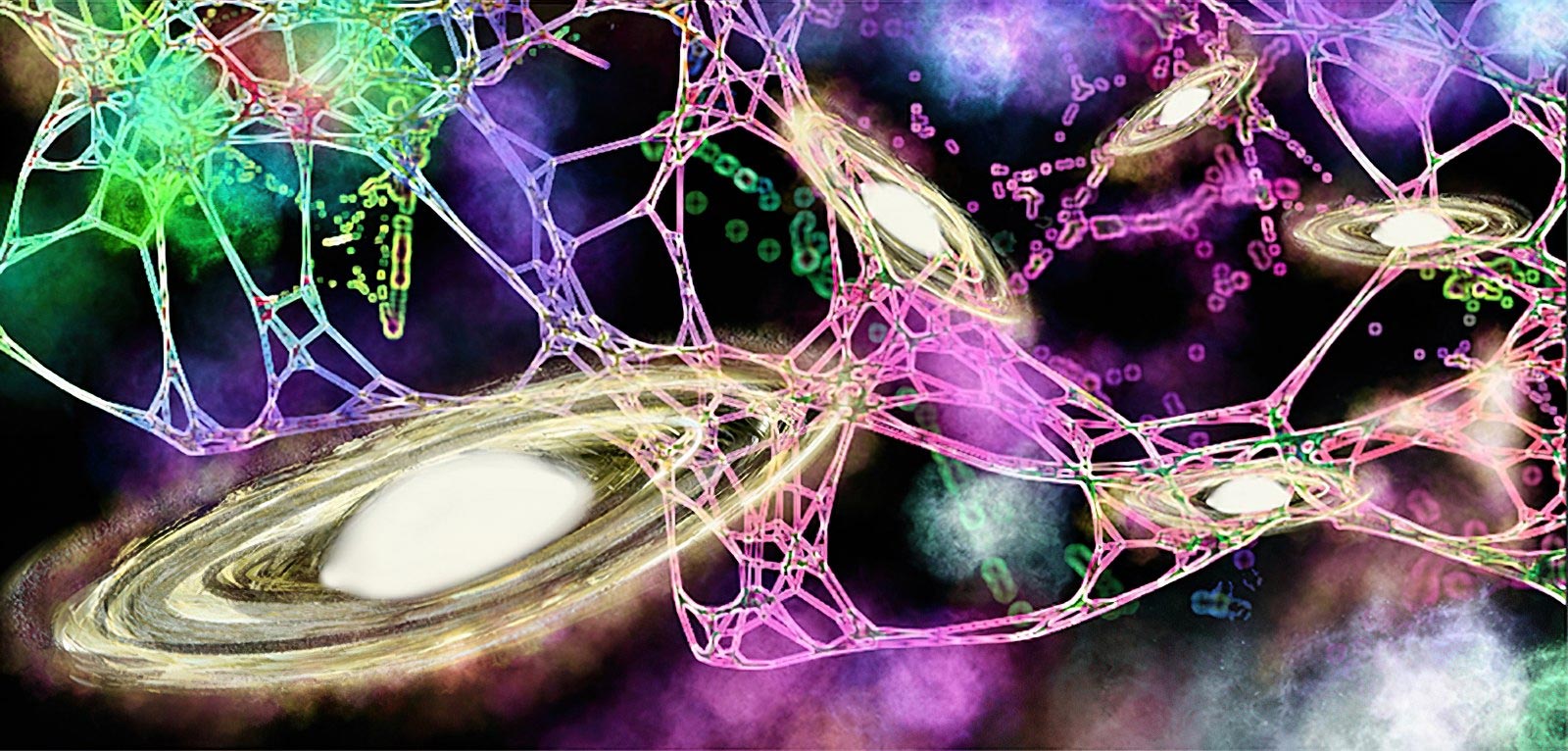
3D position and shape information for each galaxy helped to measure the magnitude of alignment relative to distant galaxies. Credit: KyotoU/Jake Tobiyama
Scientists have confirmed that intrinsic alignments of galaxies can probe dark matter and dark energy on a cosmological scale, supporting general relativity at vast spatial scales. However, the nature of dark energy and cosmic acceleration remains unresolved.
Einstein would nod in approval. General relativity may apply even in the farthest reaches of the universe.
Now, scientists from international research institutions, including Kyoto University, have confirmed that the intrinsic alignments of galaxies have characteristics that allow it to be a powerful probe of dark matter and dark energy on a cosmological scale.
By gathering evidence that the distribution of galaxies more than tens of millions of light years away is subject to the gravitational effects of dark matter, the team succeeded in testing general theory of gravity at vast spatial scales. The international team analyzed the positions and orientations of galaxies, acquired from archived data of 1.2 million galaxy observations. With the help of available 3D positional information of each galaxy, the resulting statistical analysis quantitatively characterized the extent to which the orientation of distant galaxies is aligned.
“These alignments, which are primarily produced by interactions with nearby objects, have been regarded as systematic noise in measuring weak lensing effect,” states lead author Atsushi Taruya of KyotoU’s Yukawa Institute for Theoretical Physics.
“We have also successfully measured the rate at which the galaxy distribution gradually becomes denser due to gravity, which is consistent with the general theory of relativity,” says Teppei Okumura of the Academia Sinica Institute of Astronomy and Astrophysics.
“Our research verified general relativity at the distant universe, but the nature of dark energy or the origin of cosmic acceleration still remains unresolved,” adds Okumura.
The archived data — obtained from the Sloan Digital Sky Survey and the Baryon Oscillation Spectroscopic Survey — consists of three galaxy samples selected for their brightness and distance. In addition, 3D positions and shape information for each galaxy helped to measure the magnitude of alignment relative to distant galaxies.
The results of the team’s model corroborated with theoretical calculations and gave Taruya and Okumura strong evidence that the orientations of these galaxies are related to each other, demonstrating a stronger case for general relativity on a cosmological scale.
“Current endeavors, such as the Subaru Telescope project, will provide extremely high-quality, high-precision observational data. These will spearhead innovative cosmological research using the intrinsic alignments to shed light on the nature of dark energy,” notes Taruya.
Reference: “First Constraints on Growth Rate from Redshift-space Ellipticity Correlations of SDSS Galaxies at 0.16 < z < 0.70” by Teppei Okumura and Atsushi Taruya, 13 March 2023, The Astrophysical Journal Letters.
DOI: 10.3847/2041-8213/acbf48
https://ift.tt/uPJvw9a
Science
No comments:
Post a Comment